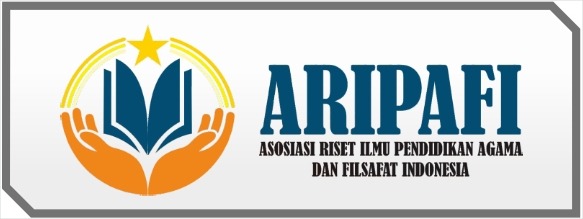Video Media In Learning Islamic Religion Education
DOI:
https://doi.org/10.61194/ijis.v1i2.73Keywords:
Media, Video, Islamic StudiesAbstract
Media in Islamic Studies serves to streamline and streamline learning. This paper describes the perspective of video media, types, syntax, characteristics, benefits, and advantages and disadvantages. This paper is a literature research using a content analysis model. The results of this study show that: 1) video is a combined tool of audio and visual media used simultaneously in learning. 2) Types of videos i.e. DVD, computer video, internet video, and streaming video. 3) The syntax of using video media, namely the preparation stage includes checking tools, understanding the relevance of video material and content, directing students to provide stationery. The implementation stage includes designing seating patterns, conveying goals, presenting tasks, presenting videos, monitoring student work, providing opportunities for students to be actively involved in dialogue, ensuring students understand the video, and students doing assignments. 4) Video characteristics are clarity of message, stand-alone, friendly, content representation, visual, and classical as well as individual. 5) The benefits of video are to streamline and streamline learning. 6) Excellence: awaken students' imagination, students learn actively, material is delivered to a large number of students, and encourages students. Weaknesses: the creativity of gur is limited, difficult to present if students cannot think abstractly, and requires special tools in delivery.
References
Ayub, M. (2013). Understanding islamic finance. Gramedia Pustaka Utama.
Burde, D., Middleton, J. A., & Wahl, R. (2015). Islamic studies as early childhood education in countries affected by conflict: The role of mosque schools in remote Afghan villages. International Journal of Educational Development, 41, 70–79. https://doi.org/10.1016/j.ijedudev.2014.10.005
Drysdale, J. (2021). The story is in the structure: A multi-case study of instructional design teams. Online Learning Journal, 25(3), 57–80. https://doi.org/10.24059/olj.v25i3.2877
Lugg-Widger, F., Munnery, K., Townson, J., Trubey, R., & Robling, M. (2022). Identifying researcher learning needs to develop online training for UK researchers working with administrative data: CENTRIC training. International Journal of Population Data Science, 7(1). https://doi.org/10.23889/IJPDS.V7I1.1712
Martiana, A., & Rahmanto, M. (2021). Islamic Microfinance and Poverty Alleviation in Indonesia: A Systematic Review of the Evidence. Islamic Studies, 60(4), 431–444. https://doi.org/10.52541/isiri.v60i4.2182
Rahayu, I., Karana, I., … M. H.-L. and C., & 2021, undefined. (2021). The relationship of online game addiction with learning motivation in school age children on COVID-19 pandemic. Lingcure.Org. https://doi.org/10.21744/lingcure.v5n1.1650
Toprak, S., Can, E. Y., Altinsoy, B., Hart, J., Dogan, Z., & Ozcetin, M. (2022). Social media video analysis methodology for sarin exposure. Forensic Sciences Research, 7(2), 279–284. https://doi.org/10.1080/20961790.2020.1825061
Wu, W., Ma, S., Su, Y., & Wu, C.-H. (2021). Double-layer learning, leaders’ forgetting, and knowledge performance in online work community organizations. Journal of Organizational and End User Computing, 33(1), 92–117. https://doi.org/10.4018/JOEUC.2021010105
Xing, X., & Saghaian, S. (2022). Learning Outcomes of a Hybrid Online Virtual Classroom and In-Person Traditional Classroom during the COVID-19 Pandemic. Sustainability (Switzerland), 14(9). https://doi.org/10.3390/su14095263
Zhou, Y., An, X., Li, X., Li, L., Gong, X., Li, Y., Chai, C. S., Liang, J.-C., & Tsai, C.-C. (2022). A literature review of questionnaires for the assessment of online learning with a specific focus on the factors and items employed. Australasian Journal of Educational Technology, 38(1), 182–204. https://doi.org/10.14742/ajet.6719
Arsyad, A. (2017).Instructional Media. Eagle Press.
Budiman, H. (2017). The Role of Information and Communication Technology in Education.Al-Tadzkiyyah: Journal of Islamic Education, 8(1), 31–43. http://ejournal.radenintan.ac.id/index.php/tadzkiyyah/article/view/2095
Daryanto. (2012).Instructional Media. Prosperous Conscience Tutorial Facility.
Destriani, R.N.D. (2022).DEVELOPMENT OF PROJECT-BASED LEARNING LEARNING VIDEOS FOR JUNIOR HIGH SCHOOL STUDENTS [Jambi University]. https://repository.unja.ac.id/32711/
Ike, S. (2022).THE USE OF VIDEO MEDIA IN PAI LEARNING GRADE VII AT SMP N 5 TERBANGGI BESAR [Raden Intan State Islamic University of Lampung]. http://repository.radenintan.ac.id/20756/
Limbong, T., Napitupulu, E., & Sriadhi. (2020).Multimedia: Video Editing with Corel VideoStudio X10. Our Writing Foundation.
Maritsa, A., Salsabila, U. H., Wafiq, M., Anindya, P. R., & Ma'shum, M. A. (2021). The Influence of Technology in the World of Education.Al-Mutarahah: Journal of Religious Social Research and Studies, 18(2), 91–100. https://ojs.diniyah.ac.id/index.php/Al-Mutharahah/article/view/303
Netriwati , & Lena , M. S. (2017).Mathematics Learning Media. Net Gems.
Riyana, C. (2007).Video Media Development Guidelines. P3AI UPI.
Rusman. (2012).Computer-Based Learning and Learning. Alphabet.
Sanjaya, R. (2019).21 Reflections on Online Learning in an Emergency. Unique.
Smaldino, S. E., Lowther, D. L., & Mims, C. (2018). Instructional Technology and Media for Learning. Pearson Education.
Suherman, S., Rahmani, A., & Alpiani, A. (2022). DEVELOPMENT OF ANIMATION VIDEO-BASED LEARNING MEDIA TO INCREASE STUDENTS' INTEREST IN HOT MATERIALS AND THEIR TRANSFERENCE IN GRADE V ELEMENTARY SCHOOL.Setiabudhi Basic Education Journal, 6(1), 1–7. https://stkipsetiabudhi.e-journal.id/jpds/article/view/133
Syafi'i, A., Akmal, & Bulan, S. (2023). Understanding and Practice of Teachers in Carrying out Assessment of Islamic Religious Education Subjects at MTs As' adiyah Uloe.Educational Scientific Work Forum, 7(1), 20–30. https://journal.unsika.ac.id/index.php/pendidikan/article/view/8923
Zed, M. (2014). Library Research Methods. Indonesian Torch Library Foundation.






